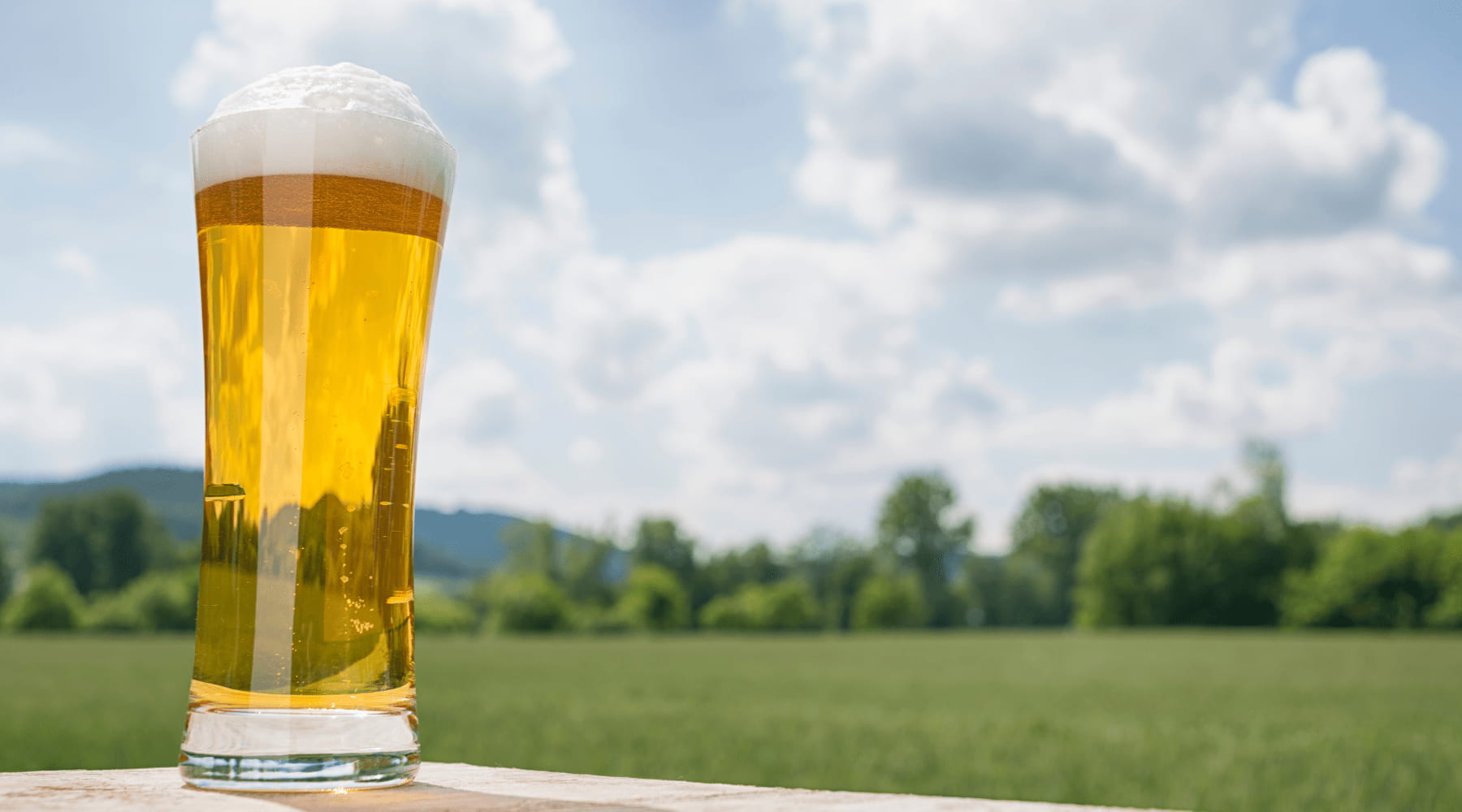
What Is A Lager? The Chilly History Behind Your Crispest Beers
If you’ve ever sipped a snappy pilsner or a smooth bock, you’ve tasted lagering at work. It’s not just a step in brewing—it’s a slow, cold transformation that gave us some of the cleanest, most drinkable beers in the world.
What Is A Lager?
At its core, lagering means conditioning beer at cold temperatures for weeks—or even months. The word comes from the German lagern, meaning “to store.”
When beer rests cold, yeast slows down and quietly tidies up after itself. Off-flavors mellow, clarity sharpens, and what’s left is that signature lager profile:
- Smoother flavor
- Brilliant clarity
- Crisp, clean finish
It’s the opposite of ales, which ferment warm and mature quickly. Lagers take patience—but the payoff is purity in the glass.
A Cool History Lesson

The story of lagering starts in the caves of Bavaria in the 14th century. Medieval brewers learned that storing beer in chilly alpine cellars kept it fresher, longer. Using bottom-fermenting yeast that thrived in the cold, they unknowingly laid the groundwork for modern lagers.
By the 1500s and 1600s, brewing was a seasonal rhythm: make beer in the winter, store it in ice-packed caves, and drink it in the summer. Those frosty conditions gave beer longer shelf life and a smoother, steadier flavor.
In 1602, it became mainstream in Bavaria when Maximilian the Great took over several breweries and bred the hybrid strain (Saccharomyces pastorianus). This strain has generally been considered the father of the modern day lager yeasts. This event also led to the creation of many styles when the newly formed Hofbräuhaus was given the yeast to brew and the "white beer" became a huge success in the Bavarian court.
By the 19th century, refrigeration and use of lager yeasts made lagering a science, not just a cellar trick. From Bavarian helles to American macrobrews, lagers went from local to global—and now dominate the world’s beer market.

How Long Does Lagering Take?
Like most things in brewing: it depends.
- Short lagering: 3–4 weeks (pilsners, helles, Dortmunders)
- Extended lagering: 6–12 weeks (bocks, dunkels, Vienna lagers)
- Temperature range: 32°F to 50°F
Some brewers stretch it even longer for historical styles or extra-clean finishes. The key is always the same: cold, slow, steady.
What Styles Require Lagering?
Some beers just wouldn’t be themselves without a proper cold rest:
- Pilsner: Snappy, hop-forward, and refreshing
- Helles: Soft malt sweetness balanced with gentle bitterness
- Vienna Lager: Toasty, amber, and smooth
- Bock: Stronger, malty, and deeply lagered
- Doppelbock: Bigger, richer, and built for patience
- Märzen/Oktoberfest: Brewed in spring, lagered until fall celebrations
Curious how to enjoy them best? Check out our Late-Summer Lager Pairing Guide or our Märzen vs. Festbier breakdown for some food-friendly inspiration.
Final Pour

Lagering is one of beer’s oldest lessons: patience pays off. It takes time, cold storage, and a steady hand—but what you get is beer that’s smoother, cleaner, and more balanced.
So next time you crack open a crisp lager, tip your glass to the Bavarian brewers (and their caves) who figured it out centuries ago.
Beginner's Lagering Schedule
Want to give it a go at home? Here’s a straightforward schedule for first-time lager brewers:
- Primary Fermentation (7–10 days): Ferment at 50°F (10°C)
- Diacetyl Rest (2–3 days): Raise to 60°F (16°C) so yeast can clean up off-flavors
- Lagering Phase (4–6 weeks): Drop to 35–40°F (1–4°C) and hold steady
- Packaging: Bottle or keg with priming sugar, or force carbonate
Patience is your best ingredient—every stage builds that clean, crisp finish. For more visit a forum like Reddit r/homebrewing for good advice on what works for others. Prosit!
Read More on Beer & Food from Happenstence
References
- Medievalists.net: Lager Beer was first brewed in 1602, study finds
-
UT Texas: A Lager Beer Revolution: The History of Beer and German American Immigration
- Yeast Research: A new hypothesis for the origin of the lager yeast Saccharomyces pastorianus
-
Hofbräuhaus: Tradition and history of the Hofbräuhaus
- University of Toronto Scarborough: How did lager become the world’s most popular beer?
- Reddit, r/homebrewing - Whats your fermentation schedule